You would be hard-pressed to find anyone more frustrated with the 2020-21 St. Louis Blues than general manager Doug Armstrong. Heralded as the golden boy among NHL GMs for his mastery in building a Cup winner in 2019, Armstrong’s star has lost a bit of its shine over the past two seasons.
To borrow his words, “It’s a results-oriented business.” There can be no hiding from the results: Last year in the bubble, the Blues went out with a whimper in the first round, but like the other NHL GMs that didn’t win, they chalked it up to a strange season hampered by the COVID-19 pandemic. This year, the results were just as poor. St. Louis’s season ended abruptly after four straight losses to the Colorado Avalanche in the first round.
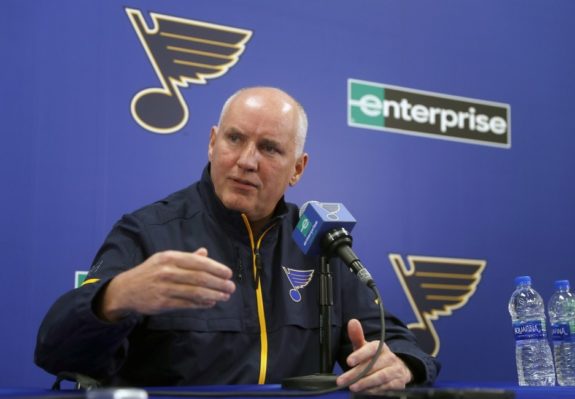
It is difficult to give a grade to a manager who 1) is not on the ice and 2) is not on the bench calling plays, but there is no mistaking it, this is Armstrong’s team. How did he do? The Blues finished with a 27-20-9 record, good for fourth place in the West Division.
What Went Right
While other teams in the Honda West were building a potent 1-2 goalie punch, the Blues went with their boy wonder, Jordan Binnington, who wowed critics in their 2019 Stanley Cup run by stealing Game 7 in Boston against the favored Bruins. Binnington’s backup was Ville Husso, the 26-year-old Finn, who went 9-6-1 this season and posted the Blues’ sole shutout.
Giving Husso a shot was a great move. He played sparingly all season to spell Binnington. Where Husso came up big was in games leading up to the playoffs. In April, Husso went 3-3 against the Vegas Golden Knights, the Avalanche, and the Minnesota Wild – all playoff-bound teams. Against the Wild on May 12, for instance, he made 31 saves to earn his first NHL shutout.
“Since the team drafted him, Husso has had an interesting developmental path through Finland’s Liiga, to the AHL, with stints in the ECHL and at the international level,” The Hockey Writers reported in January 2021. “At times, he’s looked like a future star, at other times a potential bust. Now, at 25, he likely needs to make the next step in his career. So there’s one simple question: does Husso have a future with the Blues?”
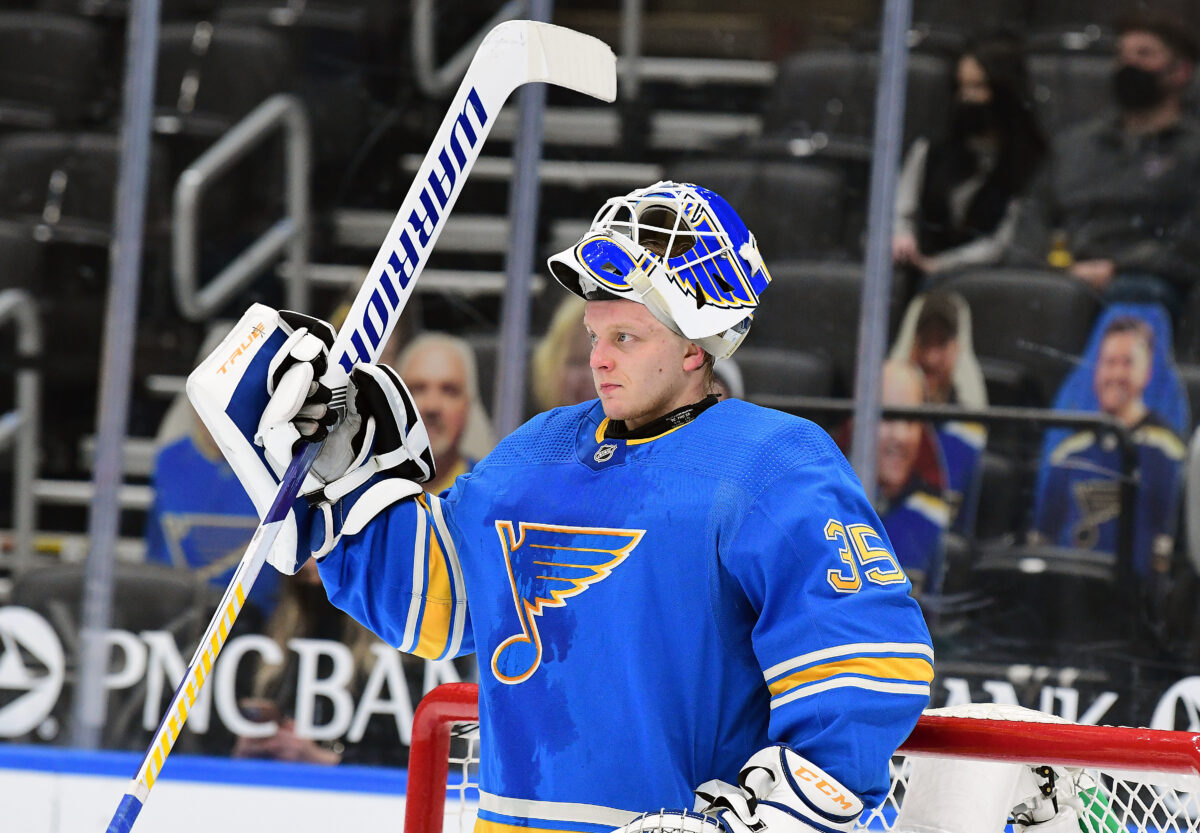
Husso answered that question with a resounding yes. Touted in the preseason as one young Blues’ star who would see extensive ice time in 2020-21, Husso answered the bell every time he was called upon. He posted a .893 save percentage and a 3.20 goals-against average. Binnington, by comparison, went 18-14-8 in 41 games.
“I thought Ville didn’t have his best start (against Colorado, a 2-1 loss on April 3), and we weren’t good in front of him, but ultimately his job is to stop pucks,” Armstrong told reporters. “In the Vegas game (on April 5), at 2-1, I thought that game could have gotten away from us. He made three or four fantastic saves to keep it at 2-1, and then you find the goal. That’s how momentum starts. Binnington? He wasn’t as tested in the game before but came back with a one-goal game. So hopefully, our goaltending is starting to play well.”
The Mike Hoffman Experiment
The Blues played some salary cap trickery by inviting Hoffman to training camp and offering him a one-year deal to be the team’s sniper and power-play specialist. It seemed like a match made in heaven. He had 17 goals, and his 36 points tied for third on the team. He was strong on the man advantage with 10 goals. Three were game-winners.
“Hoffman, 30, will go to training camp with the Blues, who will have salary-cap space to sign him after putting fellow wingers Vladimir Tarasenko and Alex Steen on the long-term injured list,” noted ESPN.com in December when Hoffman signed. “Hoffman is coming off a 29-goal season with the Florida Panthers, the highest total of any unrestricted free agent.”
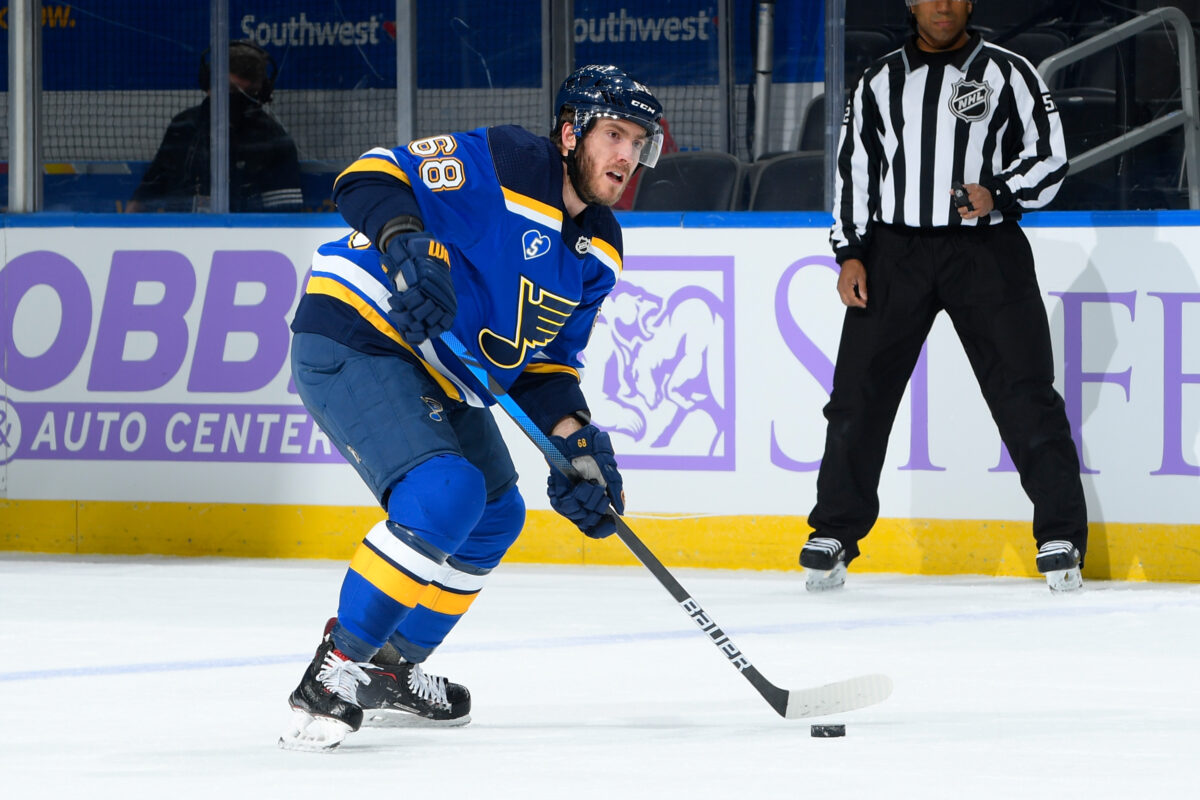
However, the drama that unfolded between him and head coach Craig Berube was disturbing. It is not the first time Hoffman has been surrounded by drama in his career, but it was the first time he experienced Berube’s tough-love style of coaching (from ‘NHL star’s outcast girlfriend is desperately trying to clear name,” New York Post, 9/13/18). Berube relegated the team’s multi-million-dollar investment to the press box in a desperate move to motivate him. Armstrong was silent on the matter. He was also silent at the trade deadline when Hoffman’s name was the trade rumor du jour and he stood pat.
According to The Hockey Writers, Armstrong defended his decision to stand pat at the time. “When we were in that state of flux where we certainly didn’t look to be buyers, partly because of our salary cap, we didn’t have a lot of room,” Armstrong told NHL.com. “We were thinking of being sellers. We had a vision of, if we were going to do something, what we wanted in return. Quite honestly, I haven’t had any meaningful phone calls in almost three days. … If we were doing anything, I probably placed a higher value on our own players than other people did.”
However, he placed a high value on captain Ryan O’Reilly and David Perron. The two veterans were leaders; Perron led the team in points with 58 (19 goals, 39 assists) and O’Reilly led the team in goals (24 goals, 54 points). Their veteran presence was crucial to helping the Blues emerge from lengthy losing streaks that dipped to eight games at one point in the season. O’Reilly tried to pump up his team by guaranteeing a win over the hot Avalanche in the first round. That prediction fell flat.
What Went Wrong
Remember when your report card was decent, but the comments section killed you with your parents? That’s what Armstrong is facing here. Despite his best intentions, the results were poor, and a first-round exit, while not unfamiliar by any means, is reason enough for pitchforks and torches in Blues Nation. When teams do not do well, there has to be a scapegoat, and Armstrong makes a convenient one this season.
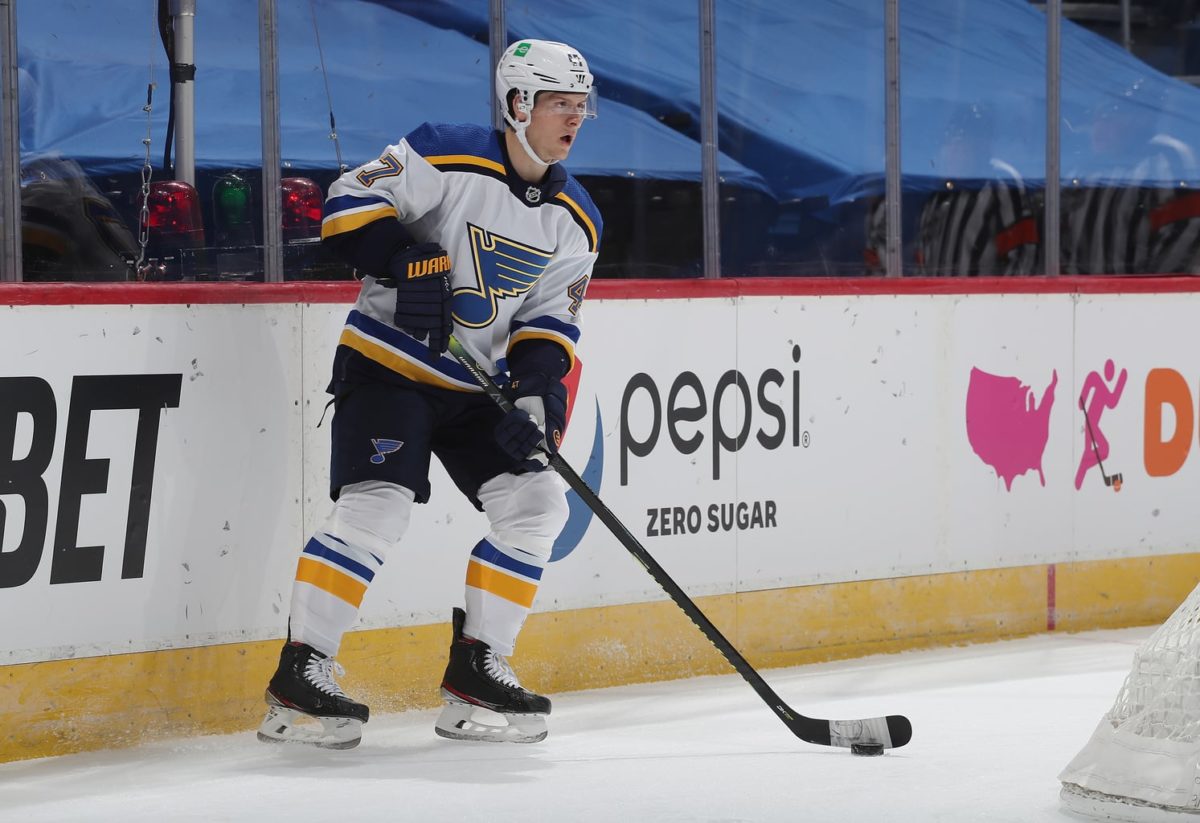
On paper and by most NHL standards, he performed well in creating a roster that committed to long- and short-term deals with their stars and bringing in proven veterans like Torey Krug and Justin Faulk to help Colton Parayko manage the defense. It all seemed to make sense, give the team’s struggles on the power play. Armstrong signed free agents Krug and Hoffman and even signed former NHL head coach Jim Montgomery to coach the power play in the offseason. The results were improved as St. Louis rose to number six on the power play in the NHL.
The Blues finished the season ranked a pedestrian 25th on the penalty kill with a 77.8 percent success rate. St. Louis did finish the season ranked sixth in the NHL in power-play efficiency at 23.2 percent.
Now Playing: Injury Bug
We can’t criticize Armstrong without mentioning the biggest problem for the roster: the injury bug. The Blues lost Steen before the season began, then Carl Gunnarsson suffered a season-ending injury early on. Parayko was playing hurt most of the season, and Tarasenko never seemed to regain his old form. Robert Thomas was nicked up, as was Tyler Bozak (upper-body injury), who was out for 22 games. The injured roster goes on and on. In the playoffs, Faulk and Robert Bortuzzo were the victims of hard hits that knocked them out. Perron was ruled out of the playoffs after testing positive for COVID-19, as did young defenseman Jake Walman.
Managing a roster during the pandemic was a Herculean task for all NHL GMs. Games were canceled or moved altogether, dates were being shifted around, travel restrictions sometimes posed a problem, and life inside an antiseptic hotel room can be grinding. The rules of doing business were changing all over – faster in some parts of the continent, way slower in others.
So, Armstrong had to deal with these new challenges on top of his regular duties, and arbitrate an ego battle between coach and star (Hoffman). That’s a lot to handle.
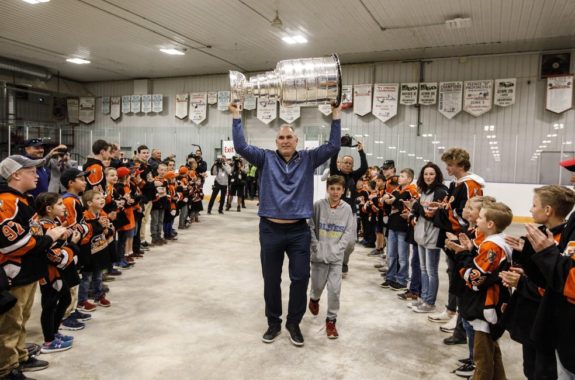
Clearly, as the season wore on, the glaring problems emerged on defense, where their defensive corps was decimated by injury and lackluster play from their bottom two lines. They got a yeoman’s effort from Bortuzzo and Marco Scandella, and Walman and Nikko Mikkola emerged as defensemen of the future. Faulk and Krug performed above expectations. Still, it was not enough; the Parayko injury set the defense back all season. How Armstrong was unable to work his signature magic to land a reliable, shut-down defenseman will be the lingering mystery of the 2020-21 season in many corners of St. Louis.
Key Stats
Goals For: 169 (13th of 31)
Goals Against: 170 (19th of 31)
The Blues tied for 14th in the league in total points (63 points)
Jordan Binnington – Tied for 1st in NHL with 8 OT/SO losses
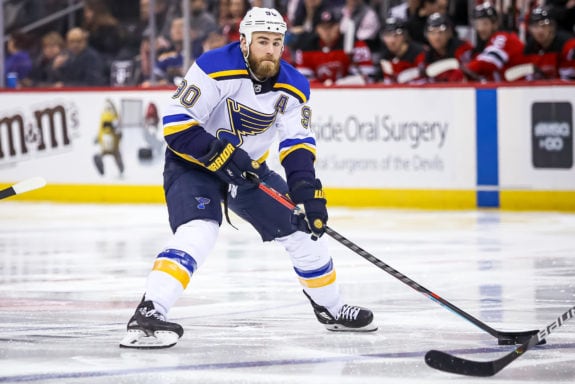
Ryan O’Reilly – Tied for 13th in the NHL in Scoring with 24 goals; 54 points is 19th in league
Ryan O’Reilly – Tied for 11th in even-strength goals (18)
Tyler Bozak – Tied for 8th in NHL in shorthanded goals
Final Grade – Doug Armstrong – D
Doug Armstrong brings out all sorts of emotions in all St. Louis fans. The fans know he’s dedicated to winning, and he doesn’t often iterate corporate lines at media conferences. He is one of them – a fan of the game who happens to run a multi-million dollar organization. Fans give him a pass because of his past actions, all of which are admirable.
Now it’s time to fast forward. The 2020-21 season left us with more questions than answers. What happened with the Hoffman fiasco at the trade deadline? Why didn’t Armstrong step in? Is it his place to step in? Does the accountability tree go all the way to the top? If so, then the blame for this season lays firmly at Armstrong’s desk.
I feel bad for saying that. But the truth hurts.
He put a lot of faith into players like Brayden Schenn, who had the most miserable season to date by his standards. He scored a respectable 16 goals and 36 points, tied with Hoffman for third-best on the team. But there were long stretches when he was invisible. He is on an $8 million contract and did little to thank Armstrong for the new pool at his house. Tarasenko makes $9.5 million a year, and he only managed four goals and 10 assists in an injury-plagued season. Thomas, a first-round draft pick in 2017, only contributed three goals and nine assists.
Armstrong signed Binnington to a whopping six-year, $36 million deal in the middle of the season, and the goalie played below everyone’s expectations. However, he turned it around leading up to the playoffs and earned back the team’s confidence.
What’s Next?
That is the question. As St. Louis watches teams like Colorado with their blazing speed and bruising defense advance in the playoffs, are they the new model for success? Would the two-goalie model make sense in St. Louis? Will Husso eventually be sought by another team?
Latest Blues Content:
- Hockey History – the NHL “Second Six”
- Oil Kings’ Adam Jecho Fits Well With St. Louis Blues’ Future Plans
- Parayko Snubbed From Team Canada Four Nations Projections
- Blues’ Forward Group in 2024-25 Will Be Far More Balanced
- Blues Add Potential Trade Deadline Chips in Faksa & Suter
What is the future of free-agent Jaden Schwartz, who hits the open market after failing to strike a deal with the Blues this season? Bozak, another veteran center whose contract is up after this season, has been a solid second liner behind O’Reilly. His leadership was an important cog in the Blues’ Cup win. Now a year older and after another season of injuries wreaked upon his body, will Bozak be as effective as he once was? How much will he command on the open market? What will Armstrong be willing to offer?
Expansion Draft
The Seattle Kraken expansion draft offers more twists and turns for Armstrong, who must decide which players to leave available for the Kraken to draft. With the Vegas Golden Knights, he let Perron go, and he helped the Golden Knights reach the Stanley Cup Final that year. Perron will be protected given his production, but what will become of Krug and Tarasenko? Will their massive contracts be attractive to the Kraken? Where does Vince Dunn fit into the Blues’ (or the Kraken’s) plans?
Finding a big, shutdown defenseman seems to be the focus of the early offseason chatter. Names being bandied about include Jamie Oleksiak from the Dallas Stars, the Carolina Hurricanes’ Dougie Hamilton fantasy every GM has right now, Seth Jones from the Columbus Blue Jackets, and even Matthew Tkahuck’s name has been floated as a possible target this offseason.
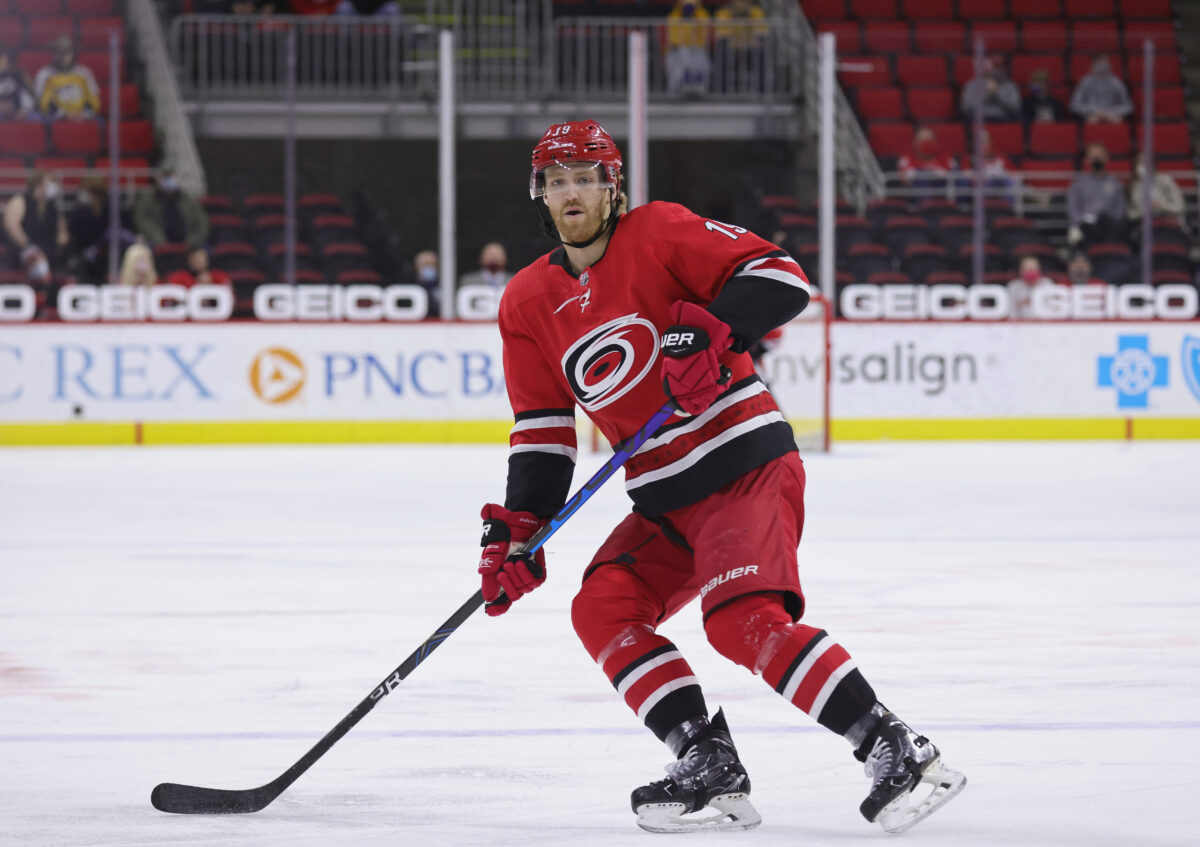
Whatever Armstrong does, he needs to do it with flair and panache as the Blues’ fan base was not happy with the Blues’ milquetoast effort in 2020-21. Injuries took the team’s heart and soul, but they still managed to eke into the playoffs. Pay no mind to the fact that the fifth-place Arizona Coyotes had an epic collapse. The ‘Yotes could not grab that final playoff spot that was literally ready to be handed to them.
The D grade may not be fair, but this season has not been fair to St. Louis. Being the standup guy he is, Armstrong will take the D and turn it into an A in no time.